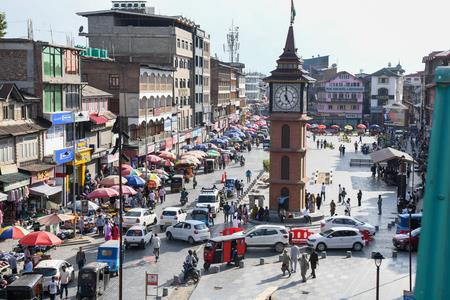
After Article 370 End, Pakistan's Terror Tactics Fail To Unnerve Kashmiris
Operation Sindoor, which happened a few months ahead of the sixth anniversary of the 370 abrogation, stands as the fitting response to Pakistan and its terrorist-supporting deep state.
Since August 5, 2019, the security landscape in Kashmir has undergone a dramatic transformation. Stone-pelting incidents, street protests, bomb blasts, and targeted firings have stopped. The number of attacks on security forces has also reduced.
The improved security was the reason that, since the 370 abrogation, the number of tourists every year has been on the rise. Each year, crores of tourists from the country and outside visit the union territory. This steady inflow has boosted local industries such as handicrafts and horticulture, contributing significantly to the region's economic revival.
The enhanced sense of security has also resulted in a manifold increase in youth participation in education, sports, competitive exams, and entrepreneurship.
Although sporadic terror attacks still occur, the overall environment -- especially in the Kashmir Valley -- has become far more welcoming for visitors. Much of the population is now focused on rebuilding and moving forward from the fear and trauma of the pre-2019 era.
However, Pakistan, after failing to re-instil fear in the people through concentrated terror attacks, unleashed the brutal April 22 terror attack on innocent tourists, killing 25 after identifying them as Hindus. One local ponywalla was also murdered. The ploy was sinister, meant to break the back of the Kashmiris who had started believing in the peace efforts. It was also dangerous as it was meant to stop the people visiting the valley and create communal strife all over the country.
But Kashmiris proved Pakistan wrong, and after initial shock, the tourists have returned to the valley. A significant moment came with the celebration of Zaeth-Ashtami by Kashmiri Hindus at the Kheer Bhawani Temple in Ganderbal. This was soon followed by the Amarnath Yatra, which has seen participation from over four lakh pilgrims. This resilience and unity have sent the strongest message yet to Pakistan and its proxies.
Gone are the days when terrorists roamed freely in the valley, even in Srinagar city. Earlier, they found shelter not only near the Line of Control but also deep within civilian areas. There were hundreds of instances where locals harboured militants or helped them escape. That landscape has changed significantly post-2019. Today, most encounters take place in remote forests, where militants hide in foliage or caves.
After 2019, the Modi government banned dozens of organisations that nurtured terrorists in Kashmir. This has helped in curbing the local recruitment into terror ranks. A majority of the terror operatives are being sent from across the border in Pakistan.
That said, security challenges still exist. Elements vulnerable to religious propaganda can still be swayed by Pakistan-backed terror groups, which continue to equate terrorism with jihad.
Recently, National Conference president and former Chief Minister Farooq Abdullah said that militancy in Jammu and Kashmir has not ended and never will. Such statements highlight where the real challenge lies -- the doublespeak of certain political leaders who prefer to keep tensions alive for personal or political gain.
But the people of Kashmir have spoken. They want peace. They want progress. And they want more tourists to visit the valley -- to build on the momentum set in motion after August 5, 2019.
(Deepika Bhan can be contacted at ...)

Legal Disclaimer:
MENAFN provides the
information “as is” without warranty of any kind. We do not accept
any responsibility or liability for the accuracy, content, images,
videos, licenses, completeness, legality, or reliability of the information
contained in this article. If you have any complaints or copyright
issues related to this article, kindly contact the provider above.















Comments
No comment